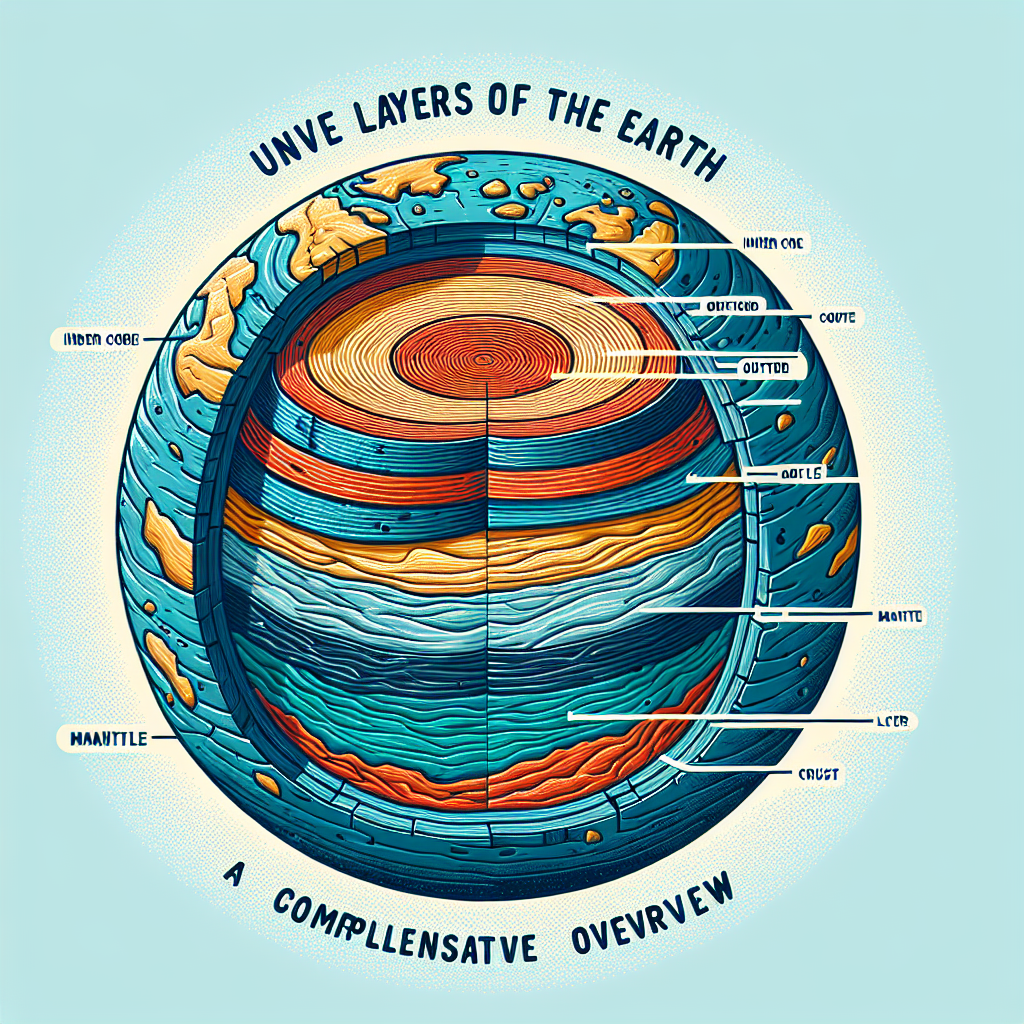Our planet, Earth, possesses an extraordinary configuration that protects every life on it while continually nurturing its dynamic processes. This configuration nestled systematically within the Earth’s concentric layers, each with its unique geological and geophysical properties. This article aims to unfold the intricate layers making up the Earth’s composition, invoking insights into their characteristics, constituents, and functions within the overall Earth’s system.
The Earth’s Layers
The planet Earth is divided into four primary layers: the crust, the mantle, the outer core, and the inner core. Each of these layers is unique with distinct physical and chemical composition.
The Crust
The crust is the outermost layer of the Earth and the surface we live on. It is divided into two types: the continental crust which is the land and the oceanic crust which is beneath the ocean basins. The crust consists primarily of rocks such as granite and basalt. It is the thinnest layer with its thickness varying from 5km (in the oceanic crust) to over 70km (in the continental crust).
The Mantle
Beneath the crust lies the mantle which constitutes about 84% of Earth’s volume. The mantle is further divided into upper and lower mantle. It is primarily composed of silicate rocks rich in magnesium and iron. The upper mantle coupled with the crust forms the Earth’s lithosphere, accounting for tectonic activities.
The Outer Core
The layer beneath the mantle is the outer core, a dense, hot layer primarily composed of liquid iron and nickel. This layer creates the Earth’s magnetic field through a dynamo effect.
The Inner Core
The innermost layer of our planet is the solid inner core. Despite the immense heat, the immense pressure prevents it from going into a molten state. It is primarily composed of iron, with small amounts of nickel and light elements like oxygen or silicon.
Conclusion
The Earth is a geologically dynamic planet intricately layered with diverse compositions and characteristics. Each has significant roles and functions that contribute to the Earth’s existence and life-form’s continuity. Without one, the system could falter. The geological study of these layers not only helps us understand our planet better but also aids in predicting various earth phenomena, offering further perspectives into Earth’s history and geological events.
Frequently Asked Questions
- What is the Earth’s mantle made up of?
The mantle is primarily composed of silicate rocks (a type of igneous rock) that are rich in magnesium and iron.
- What is the thinnest layer of the Earth?
The thinnest layer of the Earth is the crust, particularly the oceanic crust that has an average thickness of about 5 kilometers.
- Why is the Earth’s core so hot?
The Earth’s core is hot due to the residual heat from the planet’s formation, the heat produced by radioactive decay, and the gravity-driven compression.
- How does the Earth’s outer core contribute to life on Earth?
One essential contribution of the Earth’s outer core to life on Earth is the generation of the magnetic field. This magnetic field shields the planet from harmful solar radiation, making life possible.
- What is the lithosphere?
The lithosphere is the rigid outer part of the earth, consisting of the crust and upper mantle.

